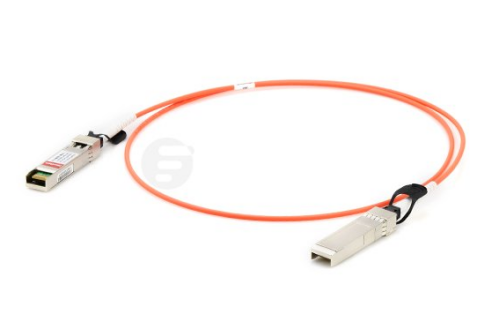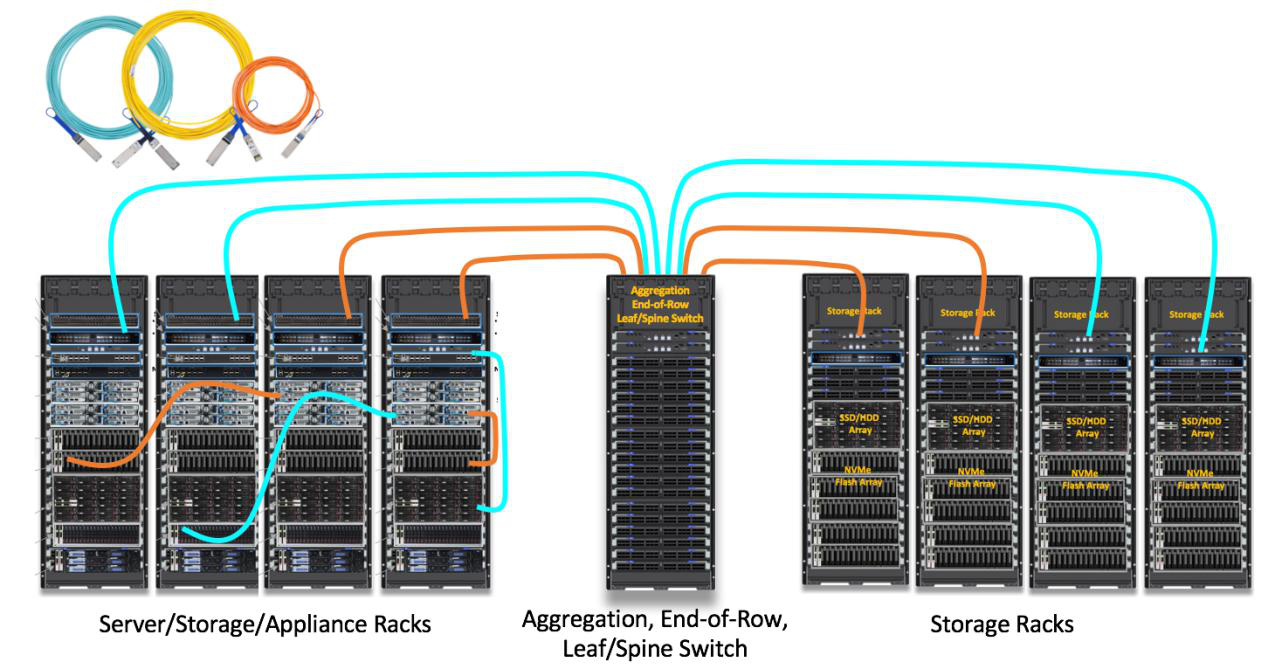-
How Is Active Optical Cable Used in Modern Data Centers?
With the advent of big data, the data center landscape is changing rapidly. There are an increasing amount of high density, high bandwidth applications on the market. At this point, the passive cable or copper cable system are in the cart. Active optical cables (AOCs), as the main transmission medium in high performance computers (HPCs) and data centers ensures the stability and flexibility of transmission. Active Optical Cable (AOC) is used for short-range multi-lane data communication and interconnect applications. This article will introduce the basis and applications of AOC cables, and analyze the advantages of AOC cables from the buyer perspective.
What Is an AOC Cable?
AOC cable is a cabling technology that accepts same electrical inputs as a traditional copper cable, but uses optical fiber “between the connectors”. AOC uses electrical-to-optical conversion on the cable ends to improve speed and distance performance of the cable without sacrificing compatibility with standard electrical interfaces. In general, AOCs are used for short interconnection (100-200 meters) as the cost-effective alternative solution. They are widely used in high performance computers (HPCs) and hyperscale, enterprise and storage systems.

AOC Cable Advantages from the Buyer’s Perspective
An AOC cable uses two optical transceivers with integrated fiber. So, what on earth are the differences between AOC and optical transceiver? And what are AOC advantages over the optical transceivers? We will talk about these question from the buyer perspective.
Firstly, AOC is a “plug and play” cable solution rather than a “plug, assemble and clean” solution as with optical transceivers. Therefore, AOCs do not have optical connectors to manually clean, as a single speck of dust inside the connector can completely block the 50-um or 9-um diameter fiber light transmission. On the other hand, an optical transceiver has two fiber ends and two transceiver ends to clean. Besides, the personnel cost of the connector cleaners can cost upwards of $250 each and stocked.
Secondly, there are big operational power cost savings. AOCs consume 2.2Watts per end compared to 2.8-4.5W for optical transceivers, because AOCs are less complex than optical transceivers and offer lower power consumption.
Last but not least, AOC cables have a short bend radius and much thinner able thickness than most DAC cables. This makes them easier to deploy and frees up a lot of space for increased air flow cooling in crowded systems.
All in all, AOCs have the lowest optical power consumption, and there is no optical connectors to clean and maintain. Both of these two elements can save the operating expenses and increases reliability.
How Are AOCs used in Modern Data Centers?
Because of the power and cost savings, AOCs have become a popular way to link Top-of-Rack switches upwards to aggregation layer switches. Additionally, AOCs are also used in storage subsystems and some hyperscale builders who often run 10G or 25G AOCs from a Top-of-Rack switch to subsystems at reaches greater than DAC limits of 3-7 meters.
Figure 1 is an example of how AOCs are typically used inside systems racks to link subsystems together and between switches and systems:

Figure 1: Typical applications of AOCs
Here is a more detailed view in Ethernet configurations showing the 40Gb/s based AOCs and Cisco switches.
As a high performance integrated cable, AOCs can provide protection from environmental pollutants and other user trouble during installation. Figure 2 shows one Cisco 40 QSFP+ to QSFP+ AOC cable connected by two switches directly.

Figure 2: One Cisco 40 QSFP+ to QSFP+ AOC Cable Connected by Two Switches Directly
For the long haul transmission between the two Cisco switches, figure 3 shows a suggested suitable solution by using single-mode patch cable and OEO Converters. The two QSFP to QSFP 40G OEO Converters which are connected by 40G transceivers, can provide seamless integration of different fiber types by converting multi-mode fiber to single-mode fiber.

Figure 3: Cisco 40GbE QSFP+ to QSFP+ AOC Interconnection Solution
Conclusion
Compared with the traditional cable, AOC has the advantages of high transmission rate, long transmission distance, low energy consumption, easy to use and so on. It can help the communication equipment enjoy the great advantage of optical transmission. It is ideal for data center and consumer electronics of the transmission cable.
 Tags: Active optical cable, data center, AOC cable application
Tags: Active optical cable, data center, AOC cable application
-
Comments
